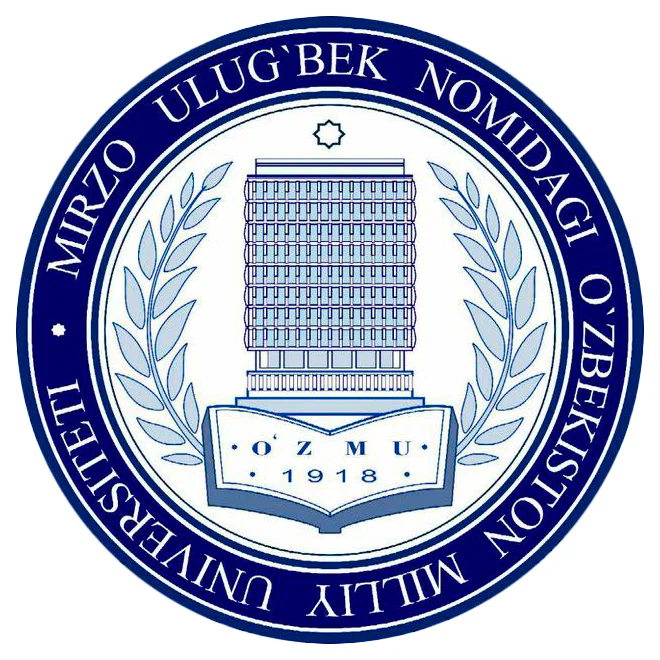Nanocrystals in silicate glass as potential wells for charge carrier localization
Abstract
Background. Nanocrystals spontaneously appearing in silicate glass during its melting are considered as potential wells where free charge carriers are localized. For the first time the depth of these potential wells is estimated based on the duration of crystallization of silicate glasses at different temperatures. For silicate glass of different compositions, the depth of such potential wells was found to be equal to 0.26-0.87 eV, while the width of the band gap of the glass itself, determined by the edge of optical absorption, is more than 3 eV. Apparently, the optical width of the band gap of glass is an average value including the depth of potential wells. At the same time these wells are essential for the mechanism of electrical conductivity of thick-film resistors (silicate glasses doped with oxide compounds of ruthenium), creating conditions for variable range hopping (Mott mechanism). Study of the influence of the nanocrystalline structure on the depth of potential wells in the material under investigation, as well as the identification of the relationship between the nanoparticle size and the energetic characteristics of the system.
Materials and methods. X-ray diffraction methods were used in the study to determine the phase composition and sizes of the nanocrystals, as well as spectroscopic methods to investigate the energetic characteristics of the potential traps. Numerical calculations based on quantum-mechanical approaches were applied to model the electronic states. The experimental data were processed using statistical methods to ensure the reliability of the obtained results.
Results. The study established that a decrease in the size of the nanocrystals leads to an increase in the depth of the potential wells, which is attributed to quantum-size effects. X-ray diffraction analysis confirmed the formation of the nanocrystalline structure, while spectroscopic measurements showed a shift in the energy levels depending on the nanoparticle size. Numerical calculations are in agreement with the experimental data, confirming the influence of the nanocrystals on the electronic properties of the material.
Conclusion. The conducted study showed that the nanocrystalline structure significantly affects the depth of potential wells, which is associated with the manifestation of quantum-size effects. Both experimental and theoretical results confirmed that a decrease in the nanoparticle size leads to an increase in the energy gap and changes in the electronic properties of the material. The obtained data could be useful for the development of new nanostructured materials with specific energetic characteristics.
About the Authors
List of references
A.N. Lopanov, N.S. Lozinskyy, Ya.A. Moroz. Chemical processes accompanying the formation of modified ruthenium resistors and their functional properties. Russian Chemical Bulletin, International Edition 69
(9) 1724—1730 (2020).
F. Cheng, W. Kong, T. Xuan, A. Chang. Effect of sintering temperature on structural and electrical properties of Mn0.55Fe1.25Cu2Ni2.2O4+ NTC thick film. Journal of Materials Science: Materials in Electronics 31, 12848–12855 (2020).
M. Wen, X. Guan, Hui Li, J. Ou. Temperature characteristics of thick-film resistors and its applicationas a strain sensor with low temperature-sensitivity. Sensors and Actuators A 301 (2020) 111779.
R.B. Nuernberg, N.M.P. Machado, M. Malki, M. Neyret. Electrical behavior of RuO2-glass composites: The effect of RuO2 particle size on the percolation threshold. Journal of Nuclear Materials 546 (2021) 152777.
A. Piarristeguy, R. Nuernberg, D. Jouglard, M. Ramonda, R. Arinero, A. Pradel, M. Neyret. High-resolution electrical characterization of RuO2-borosilicate glass composites. Journal of Alloys and Compounds 876 (2021) 160123.
C. Ferrero. Proposed theoretical models for thick film transport mechanisms: Example of thick film strain gauges on enamelled steels 2022. https://www.researchgate.net/publication/358042608.
G. Abdurakhmanov. Electrical conduction in doped silicate glass (thick film resistors). In: New Insights into Physical Sciences. V. 4, 47-71. London-Hooghly, Book Publishers International, 2020.
A.I. Berezhnoy. Sitals and photositals. Moscow: Mashinostroenie Publ., 1966. 347 p. In Russian: А. И. Бережной. Ситаллы и фотоситаллы. – Москва: Машиностроение, 1966. – 347 с.
L.I. Demkina. Physico-chemical fundamentals of optical glass production. Moscow: Khimiya Publ., 1976. In Russian: Л. И. Демкина. Физико-химические основы производства оптического стекла. – Москва: Химия, 1976.
E.Ya. Mukhin, N.G. Gutkina. Glass crystallization and methods of its prevention. Moscow: State Publishing House of the Defense Industry, 1960. In Russian: Е.Я. Мухин, Н.Г. Гуткина. Кристаллизация стекол и методы ее предупреждения. – Москва: Гос. изд-во Оборонной промышленности, 1960.
N.N. Kachalov, V.G. Voano. Fundamentals of optical glass production. Leningrad: ONTI Chemteoret, 1936. 196 p. pp. 75-76. In Russian: Н.Н. Качалов, В.Г. Воано. Основы производства оптического стекла. – Ленинград: ОНТИ Химтеорет, 1936. – 196 с. с. 75-76.
Optical materials and technologies. https://portal.tpu.ru/SHARED/e/ELP/teaching/omit/Tab1/Tab/ Lekcii$_$OMIT-1.pdf. accessed 03/23/2025. In Russian: Оптические материалы и технологии. https:
//portal.tpu.ru/SHARED/e/ELP/teaching/omit/Tab1/Tab/Lekcii$_$OMIT-1.pdf. доступа 23.03.2025.
Alexandrov, D. Heavy Electrons in Nano-Structure Clusters of Disordered Solids. In: ICCF-14 Internat. Conf. Condensed Matter Nuclear Science. www.lenr-canr.org/acrobat/Alexandrovheavyelect.pdf.
Technical Data Sheet. https://www.tegs.ru/wp-content/uploads/2018/07/C87-2.pdf
OST 11 027.010-75. The glass is electro-vacuum. Stamps. In Russian: ОСТ 11 027.010-75. Стекло электровакуумное. Марки.
Technical Data Sheet. https://www.tegs.ru/wp-content/uploads/2018/07/C78-5.pdf.
O.O. Molokanova, A.M. Karmokov, O.A. Molokanov, M.M. Karmokov, A.I. Khasanov, A.H. Dyshekova. The fundamental absorption and band gap of C87-2, C78-4, and C78-5 glasses. Physico-chemical aspects of studying clusters, nanostructures and nanomaterials. – 2023. – Vol. 15, 189-195. In Russian: О.О. Молоканова, А.М. Кармоков, О.А. Молоканов, М.М. Кармоков, А.И. Хасанов, А.Х. Дышекова. Фундаментальное поглощение и ширина запрещенной зоны стекол С87-2, С78-4, С78-5. Физико- химические аспекты изучения кластеров, наноструктур и наноматериалов. – 2023. – Вып. 15, 189-195.
S.V. Nemilov. Optical materials science: Optical glasses. St. Petersburg: ITMO Publ., 2011. In Russian: С.В. Немилов. Оптическое материаловедение: Оптические стекла. - СПб.: ИТМО, 2011.
Sidorov T.A. Infrared and ultraviolet spectra and the structure of lead-silicate glasses // J. Applied spectroscopy – Minsk, 1967. – Vol. 6, No. 1. - p. 98. In Russian: Сидоров Т.А. Инфракрасные и ультра- фиолетовые спектры и структура свинцово-силикатных стекол // Ж. прикладной спектроскопии – Минск, 1967. – Т. 6, №1. - С. 98.
I.I. Kitaygorodsky, N.N. Kachalov, Glass technology. Moscow: Stroyizdat Publ., 1961. In Russian: И.И. Китайгородский, Н.Н. Качалов, Технология стекла. – Москва: Стройиздат, 1961.

This work is licensed under a Creative Commons Attribution 4.0 International License.

